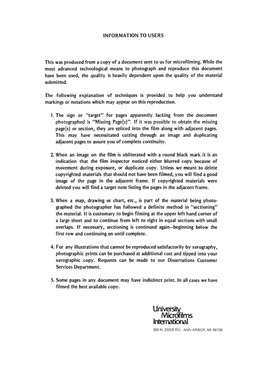| dc.contributor.author | Mcdaniel, Larry Scott, | en_US |
| dc.date.accessioned | 2013-08-16T12:28:24Z | |
| dc.date.available | 2013-08-16T12:28:24Z | |
| dc.date.issued | 1981 | en_US |
| dc.identifier.uri | https://hdl.handle.net/11244/4899 | |
| dc.description.abstract | We have previously shown that Merthiolate-killed Blastomyces dermatitidis yeast cells greatly enhance the cell-mediated immune response in C57BL/6J mice. Therefore, the use of this fungus as an immunopotentiator against EL4 lymphoma was investigated. Preimmunization resulted in a doubling of the mean survival time of mice at an initial tumor challenge of 10('2) to 10('4) EL4 cells. In some experiments, mice were given a range of 10('2) to 10('6) EL4 cells intraperitoneally or 10('2) to 10('6) EL4 mixed with killed B. dermatitidis. None of the animals receiving tumor cells alone survived. Mice treated with yeast cells were protected from as many as 10('4) tumor cells. Complete suppression of tumor growth was observed in treated animals at 10('2) and 10('3) tumor cells. The mice were not immune to further EL4 challenge. The lack of tumor-specific immunity indicated nonspecific suppression by macrophages. At 10 days after treatment, the peritoneal macrophages from mice showing complete suppression were tested for their ability to prevent in vitro tumor cells proliferation. These macrophages demonstrated 90% inhibition of ('3)H-thymidine incorporation by EL4 at a 100:1 effector to target ratio. Macrophages from treated animals at 10 and 15 exhibited a two-fold increase in specific lysis of EL4 as compared to resident macrophages. Spleen and lymph node cells from protected animals showed no cytotoxic activity against EL4 in a ('51)Cr-release assay. Treatment of tumor bearing mice with a single dose of B. dermatitidis was effective only if administered within 24 hours of tumor establishment. | en_US |
| dc.description.abstract | Cell-mediated immunity (CMI) plays the dominant role in the immune response of mice to Blastomyces dermatitidis infections. Since macrophages play an important role in CMI, the interactions between sensitized murine peritoneal macrophages and the yeast phase of B. dermatitidis were investigated. Scanning electron microscopy (SEM) showed that the sensitized macrophages were more efficient in phagocytizing B. dermatitidis than non-sensitized cells. In addition, there appeared to be activation of metabolic pathways within the sensitized macrophages as indicated by increased chemiluminescence activity during phagocytosis. There was a significant difference in the ability of sensitized macrophages to control intracellular proliferation of the yeast when compared to non-sensitized cells. This was determined by disruption of macrophages and plating for viable yeast. Scanning electron microscope observations offered further substantiation. Experiments with Candida albicans indicated that B. dermatitidis nonspecifically activated macrophages. At 2 hours post-phagocytosis, 30% fewer C. albicans in activated macrophages were able to form germ tubes. SEM indicated that a number of activated macrophages may interact with a single yeast aggregate in vivo. A new mechanism of macrophage activation is suggested. These studies demonstrated the multipotential of activated macrophages with regard to their functional activity. | en_US |
| dc.format.extent | vi, 105 leaves : | en_US |
| dc.subject | Macrophages. | en_US |
| dc.subject | Blastomyces dermatitidis. | en_US |
| dc.subject | Immune response Regulation. | en_US |
| dc.subject | Health Sciences, Immunology. | en_US |
| dc.title | Immunomodulation by Blastomyces dermatitidis : | en_US |
| dc.type | Thesis | en_US |
| dc.thesis.degree | Ph.D. | en_US |
| dc.thesis.degreeDiscipline | Department of Microbiology and Plant Biology | en_US |
| dc.note | Source: Dissertation Abstracts International, Volume: 42-07, Section: B, page: 2773. | en_US |
| ou.identifier | (UMI)AAI8129415 | en_US |
| ou.group | College of Arts and Sciences::Department of Microbiology and Plant Biology | |
